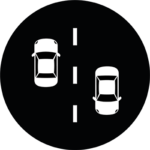Skills you need to pass your driving test

When you learn to drive, you’ll be learning and practising 27 important driving skills that you’ll need for a lifetime of safe driving.
Learn with a driving instructor
It’s unlikely that anyone except an approved driving instructor (ADI) will have the experience, knowledge and training to teach you properly.
They’re specially trained to help you learn the 27 skills.
Find out about taking driving lessons.
Practise with family or friends
When you’re at the right level, it’s a good idea to start practising with family or friends between your driving lessons.
People who combine extra practice with driving lessons do better when they take their driving test.
Find out about practising with family or friends.
The skills you need to learn
The 27 skills you need to learn to become a safe driver are split into 8 groups.

Basics (skills 1 to 4)
Includes legal responsibilities, safety checks, cockpit checks and security.

Control and positioning (skills 5 to 7)
Includes controls and instruments, moving away and stopping, and safe positioning.

Observation, signalling and planning (skills 8 to 13)
Includes mirrors, signals, anticipation and planning, use of speed, other traffic and fuel-efficient driving.

Junctions, roundabouts and crossings (skills 14 to 16)
Includes junctions, roundabouts and pedestrian crossings.

Manoeuvres (skills 17 to 20)
Includes reversing, turning the car around, parking and emergency stops.

Road types (skills 21 to 23)
Includes country roads, dual carriageways and motorways.

Driving conditions (skills 24 to 26)
Includes driving in the dark, driving in different weather conditions, and driving with passengers and loads.

Following routes (skill 27)
Includes independent driving following directions from a sat nav and a series of traffic signs.
Next page:
Not feeling completely prepared?
Only take your driving test if you’re feeling completely prepared.
You can move your driving test back if you’re not feeling quite ready yet.
It’s free to change your appointment time, as long as you do it at least 10 full working days (Mondays to Saturdays) before your test.